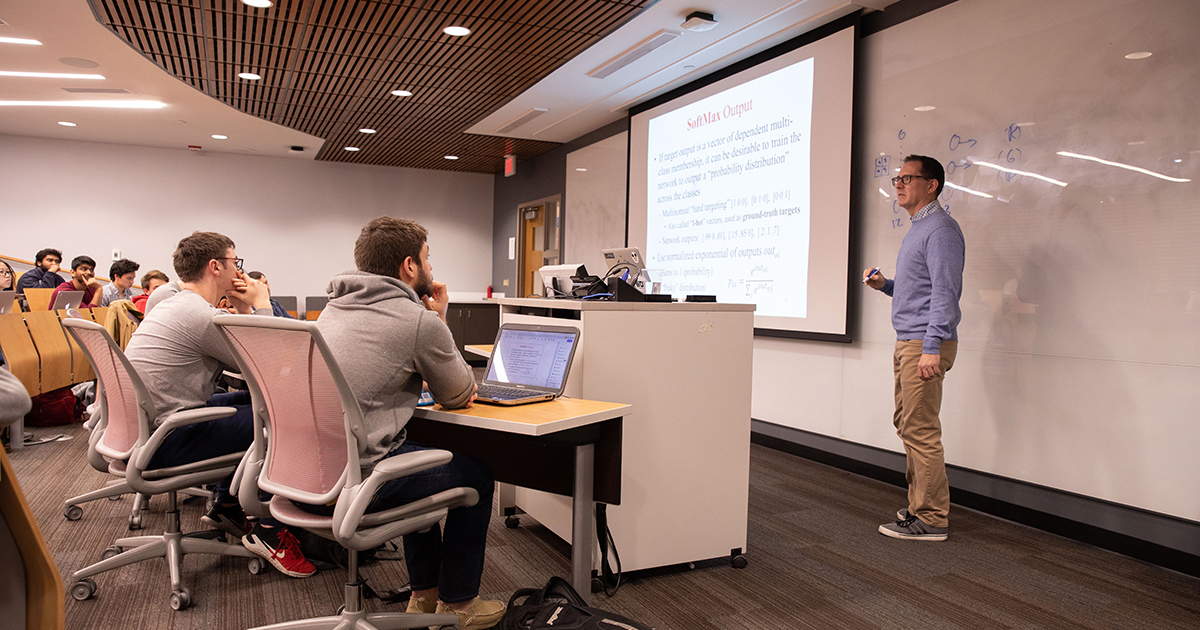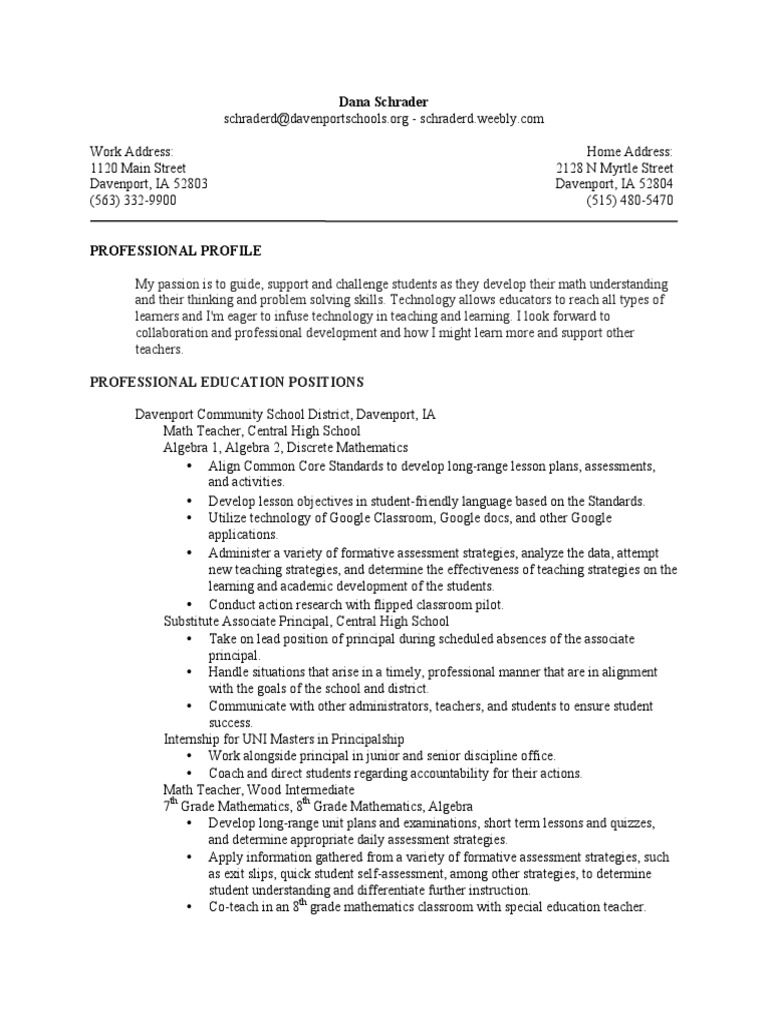- Philosophy Of Education Ms. Schrader's Teaching Portfolio Lesson
- Philosophy Of Educationms. Schrader's Teaching Portfolio Allocation
Learning through play is a common teaching philosophy for young children. Jean Piaget developed the PILES theme to meet the physical, intellectual, language, emotional and social needs of children. Piaget's constructivist theory emphasizes hands-on educational experiences, giving children the chance to explore and manipulate objects. I strive to achieve this through my classroom instruction as described in my teaching philosophy. Children are the future citizens and thinkers of our world, let’s inspire and prepare them! Header Image: Broken Piggy Bank (August 21, 2007) DSC00724.JPG.
Diane Ahmann
Essentials for Mathematics Learning
Repulsion of math is one of the most common attributes of people in today’s society. Adults and kids alike have an overt distaste for the dreaded “m” word. There are many factors that go into this aversion including its abstract processes, its cumulative nature and its crucial contemplative tactics. Math requires people to manipulate, evaluate, and analyze in every application. These processes take time and energy that most people simply are not willing to invest. Unfortunately, most people do not recognize or appreciate how important these skills are, not only to math, but to life in general. Undoubtedly few students will become judicious mathematicians in their adult lives, but they will use the abilities obtained in the math classroom every day. As such, it is vital for educators to help students recognize the importance of the characteristics of knowledge and understanding in the math classroom.
Math is more than just numbers and computations; it is a diagnostic, discerning practice that requires multiple complex processes for success. These processes include spatial reasoning, visualization, computational knowledge, and comprehensive analysis. Because of this complexity, simple rote memorization and drill and practice will not help students succeed in the classroom or in the real world. It is more important for students to understand the functional qualities of math processes and problem analysis. As Esquith (2007) points out, “If a student can do ten multiplication problems, why make her do five hundred? And if she can’t do ten multiplication problems, why in the world make her do five hundred (p. 64)? While practicing math skills is important for solidification, if a student has a fundamental problem with understanding, no amount of practice will make them miraculously comprehend the process. Therefore it is important that as educators we ensure that students not only have the ability to complete the computations, but that they have a firm understanding of the principles, approaches, and applications of those computations. Moreover, it is vital for teachers to give students the tools to approach problems from multiple perspectives and strategies. In order to do this, teachers must integrate thought-provoking applicable lessons that expose students to the varied methods for approaching, solving and connecting math problems to real life.
Because students in middle schools are growing in crucial conceptual arenas, this stage in their math education is imperative to their futures. Students enter middle school with the fundamentals of math operations, and now they begin to apply these operations to higher level math concepts. At the same time, students are moving from the concrete operational to the formal operational phase in Piaget’s theory of cognitive development. This means that students are beginning to recognize complex thought processes and metacognition. If educators do not support this transition, students might not fully develop these critical cognitive abilities (Brown & Knowles 2007). In order to provide students assistance in this transition, math educators must expose students to a variety of conceptual tasks and applications that challenge students beyond rote memorization and basic computations. Teachers must provide multiple avenues for learning and demonstrate a variety of approaches for problem solving. As students labor through the cognitive effort of generating functional math decisions, they are learning the critical thinking skills that enable them to succeed in their adult lives.
Another central component in adolescent education is the various learning styles of each student. Most people are predisposed to acquire information from distinct styles of learning such as aural, visual or kinesthetic. While it is important for students to gain the ability to absorb new information from any style, it is even more important for educators to provide information in a variety of methods to allow students to learn within their predominate style. Using a differentiated process of instruction and assessment gives students an equal opportunity to be successful in their education. Traditionally, math has been taught with direct instruction and assessed with quizzes and tests. For math teachers, the process of incorporating differentiation can seem difficult if not impossible. However, there are many simple steps that can seamlessly incorporate all students’ learning styles in the math classroom. Teachers can use manipulatives, videos and websites to engage the kinesthetic and visual learners and they can use narrative exercises that go beyond lectures to engage the aural learners. Furthermore, there are analytic and synergetic learners. The analytic learner prefers to work independently and follow step by step logical sequences. The synergetic learner favors collaborative group work and prefers multiple activities and approaches (Grant & Sleeter 2011). Because of these differences, it is important for math teachers to branch out from the typical lecture and worksheet format to give students the opportunity to work together to create, solve, and discuss problems. As for assessments, teachers can have students find or create their own problems from real life or write a story incorporating math. These types of projects force students to dive into the math on a practical level to reinforce learning. When multiple modes of instruction and assessment are incorporated into the classroom, all students benefit from an increased range of learning by increasing adaptability. This adaptability is a key component to success well beyond the walls of the classroom.
We have all heard the timeless question “why do we need to learn this?” and the typical response “because you’ll use math every day.” While these phrases are common and the reply is correct, students neither want nor care to realize the truth in the answer especially when they hate or fear math. It is far more productive to provide students with the recognition of the connectivity of the development of math skills to their current (and future) lives. When students start to function as critical thinkers in all subjects and life itself, they become empowered with a limitless future. As math teachers it is our responsibility to give students the tools to perform not only the math aptitude necessary for life but also the cognitive capacity to succeed in all aspects of life.
References
Brown, D. & Knowles, T. (2007) What Every Middle School Teacher Should Know. Portsmouth, NH: Heinemann.
Esquith, R. (2007). Teach like your hair’s on fire: The methods and madness inside room 56. New York: Viking Adult.
Grant, C. & Sleeter, C. (2011). Doing multicultural education for achievement and equity. (2nd ed.). New York: Routledge.
'The pathway to educational excellence lies withineach school.'

Terrance Deal
Learning is like climbing mountains. A metaphor I use often with my students. Teaching and learning .... reaching our highest peaks as we climb onwards and upwards mountains of learning. It requires asense of adventure, perseverance, and a great deal of hard work.Both give the climber lots of pleasurein what they achieve alongwith a view of the world that most people don’t get.If learning is like mountain climbing then teaching can beseen as the process of facilitating the climb.The role of the guides (teachers, parents, administrators,and the school community) is to assist our youngsters through their educationaljourney.
Theperfect climate for reaching towards their highest peaks is in an atmospherewhere productive learning and positive interactions between the teacher, thestudent, and the classroom environment take place. It is essential that we equip our students with the following tools:
• Achievable goals
• Tools for success
• Instructional strategies
Philosophy Of Education Ms. Schrader's Teaching Portfolio Lesson
• Differentiated Instruction
• Academic Choice
• Decision making/ problem solving skills

•Challenging, relevant, and creative activities
Along the way, we, as educators,need to continually encourage our students to think about what it takes to bereally good at an activity, whether it is schoolwork, a sport, or a hobby.I believe it is our responsibility toteach students about the importance of effort.We can and should teach students habits of preparedness,mindfulness, and persistence to use and apply when engaging in any task whetherit is challenging or not.As theirguides, we are helping them to realize that developing positive attitudes andbehaviors will help them succeed.It is our role to guide our students as they learn to encourage,reinforce, monitor, and motivate themselves along their journey.As they continue their climb, it is ourresponsibility to provide opportunities for:
•Self-monitoringto check quality of work
•Collaboration with teacher and parents
•Listening and responding to suggestions for improvement
•Usingchecklists and rubrics to guide learning
Feedbackis a powerful force and probably the most important tool we can use to improveacademic performance, attitude, and behaviors.Effective learning takes place when students learn toprovide their own feedback, monitor their own feedback, and monitor their ownwork against specific criteria (i.e rubric).Helping our students develop a sense of responsibility formaking decisions about their behaviors, academic goals, and building positiveattitudes about school help all students continuously improve their skills as they are engaged in their life long path towards growth and learning.
Our goal aseducators should also be to support and build upon our students’ socialand emotional learning.Providinga positive, secure, and respectful school environment where everyone isvalued for both our similarities and our differences is essential. All students should be exposed to a variety of experiences in theclassroom setting where their instruction is differentiated and they haveopportunities to explore their multiple intelligences.
Philosophy Of Educationms. Schrader's Teaching Portfolio Allocation
As we, educators, lead many expeditions,we know that we are not alone.Weare a team. The entire school community is committed to student learning,collaboration, establishing high expectations, and use evidence to show ourschool improvement as we reach towards our highest peaks.
